The Minié rifle system was developed in 1849 following the invention of the Minié ball in 1847 by the French Army captains Claude-Etienne Minié and Henri-Gustave Delvigne.
In Britain firearms were undergoing a rapid evolution from smooth to rifled barrels by the time of the Crimean War, notably through production at the newly established Royal Small Arms Factory at Enfield.
British Ordnance incorporated the rifling system for the Minié ball into a new pattern musket, designating it the P1851. Similar in outward appearance, this musket was in itself an evolution from the last of the British smoothbores, the percussion P1842.
A new socket bayonet was produced to accompany the new P1851 Minié rifle, very similar in overall appearance to the P1842 socket bayonet for the old smoothbore. Identification of a P1851 socket bayonets can be accomplished by observing certain features.
The major differences between the P1842 and P1851 bayonet are the inside diameter of the socket and the configuration of the three-stage slot. These differences are tabulated below:
| Pattern | Socket i/d | three stage slot | slot to muzzle |
| P1842 | 24mm | short 1st. step | 39mm |
| P1851 | 22.5mm | long 1st. step | 32mm |
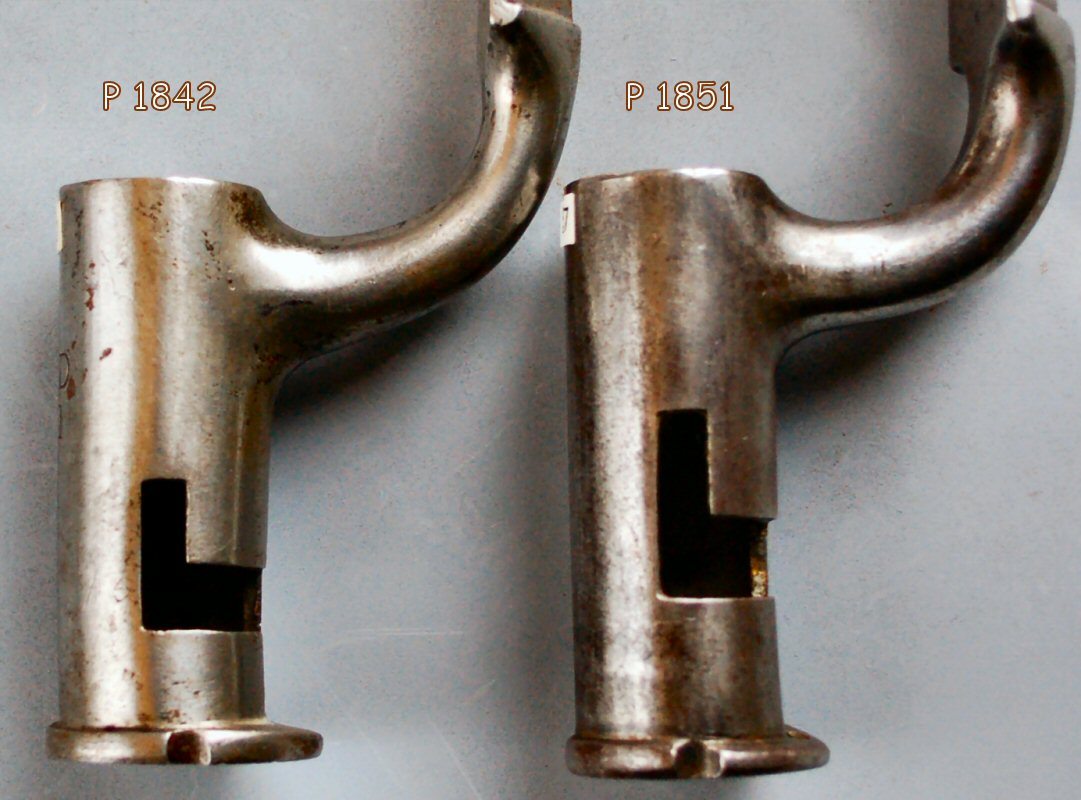
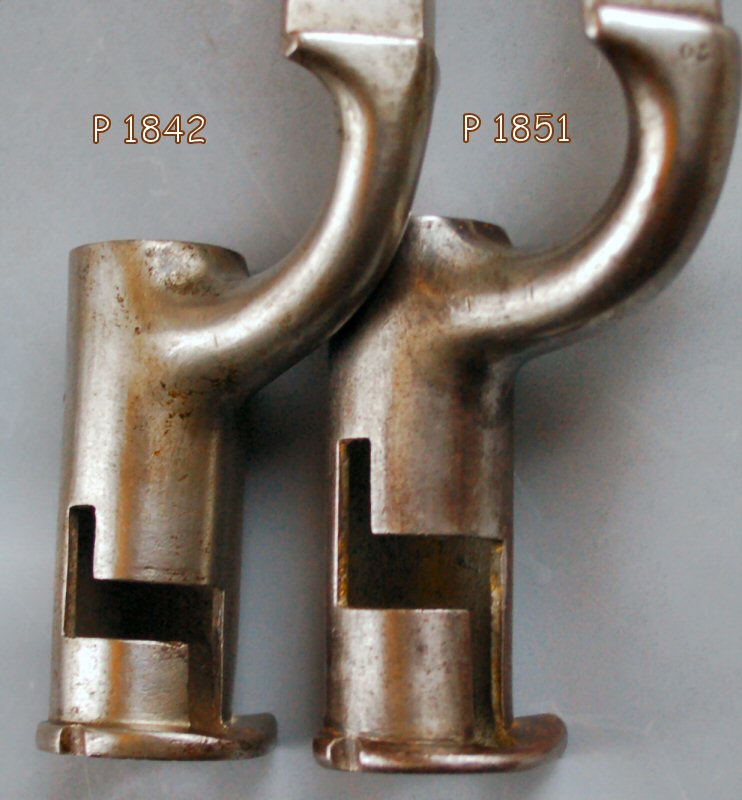
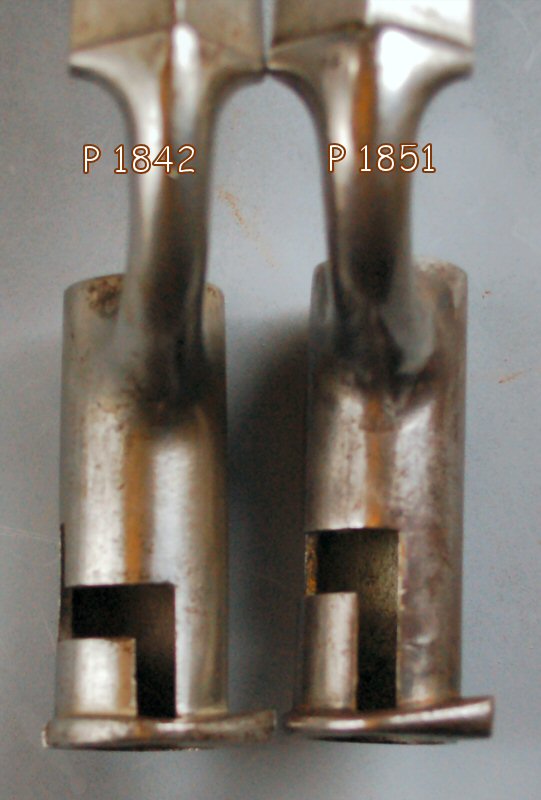
Rifled barrels were a vast improvement over smoothbore, and to speed introduction into service quantities of existing smoothbore P1842 muskets were upgraded by fitting rifled barrels.
These new Minié barrels were a smaller diameter than the original P1842 barrels, thus existing stocks of P1842 bayonets were modified by heat shrinking the socket to an inside diameter of 22.5mm to fit, and extending the third slot step to fix on the foresight block.
The following images illustrate a new-made P1851 bayonet (left) with a modified P1842 bayonet (right).
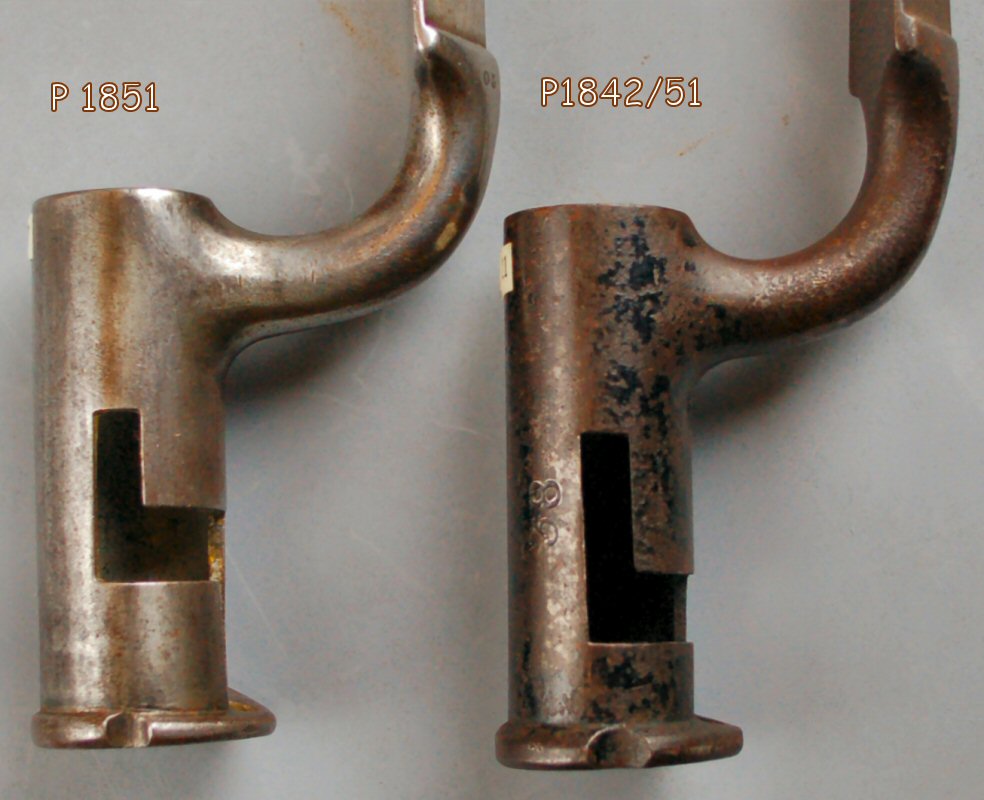
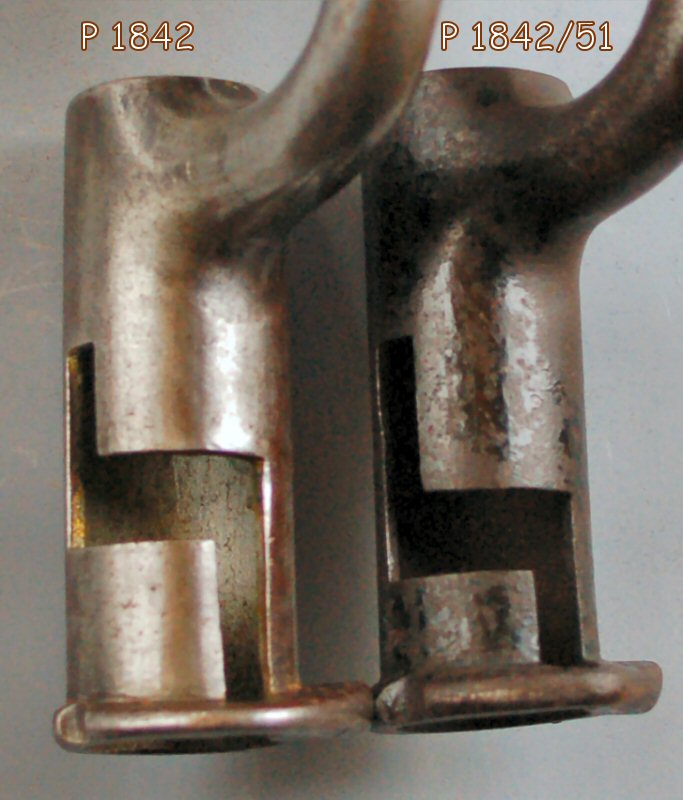
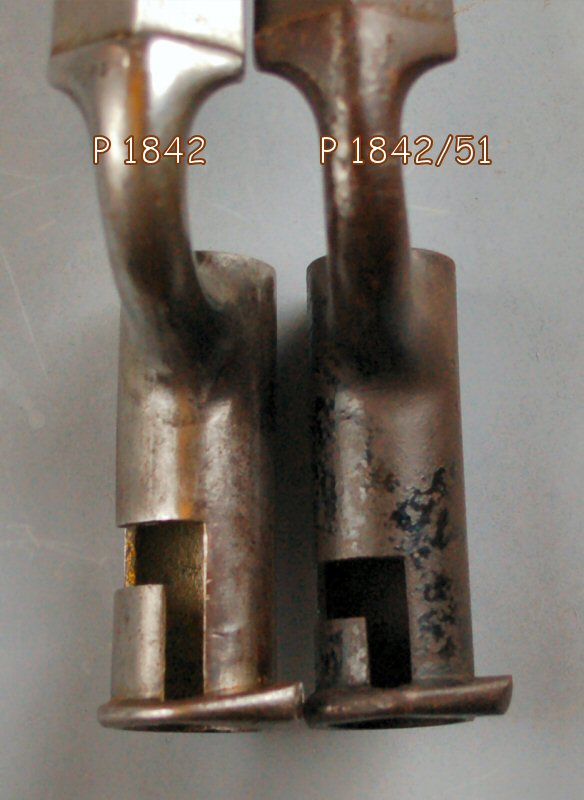
P1851 Minié rifles and bayonets were rapidly replaced in service by the superior P1853 Enfield rifled musket and bayonet with locking ring.
- - O O O - -